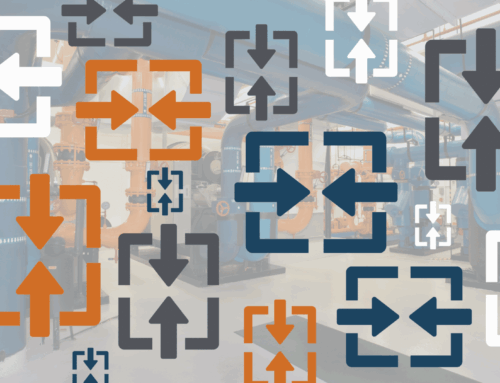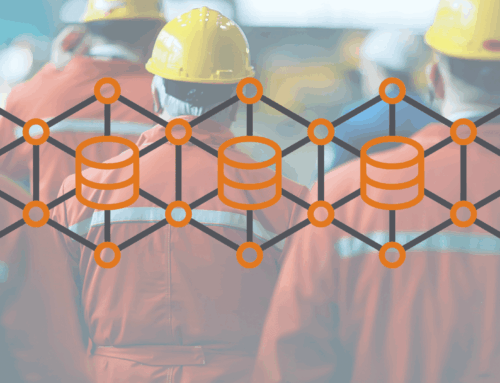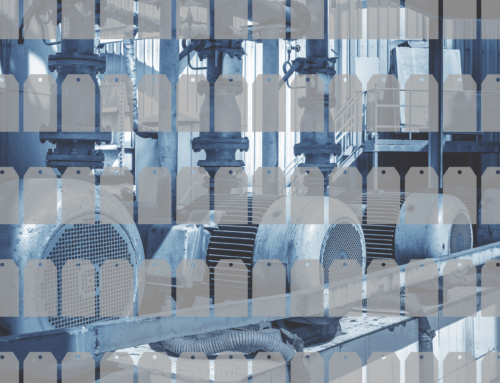We hope everyone is enjoying the sweater weather we’ve been having and staying warm through the cold! This year has been filled with significant milestones and valuable lessons learned. Throughout it all, we have been sharing our best tips and tricks to help improve your organization’s use and value of industrial data solutions. We hope these tips have served you well and plan to keep providing you with valuable insights in the years ahead.
So, let’s take a look back at our 2023 tips and tricks:
2023 Tips and Tricks
January – Script Tag Editor
With the Script Tag Editor, you can:
- Create calculated or virtual tags using mathematical functions and logic with both analog and digital tags. A simple example uses digital tags to determine whether all pumps are open in a system. Rather than having to check each individual pump, you have a single virtual tag to report whether all pumps are open.
- Expand the tags you monitor and analyze by creating calculated tags. An example of functions built into HanPrism is moving averages. For example, users eliminate unnecessary calculations when comparing periods by creating a moving average virtual tag for analog data like temperature, pressure, or flow.
- Use mathematical expressions to create virtual tags for additional analysis, including an analog tag’s rate of change. By calculating the slope of a tag, users can better understand current operations over different periods.
- Expand your equipment insights and monitor what’s essential for maintaining a reliable system with additional insights and improved monitoring. Review the built-in functions available when creating calculated tags in your data historian, from min and max calculations to steam tables to operation counts.
February – Visualizations
Data visualizations help users understand and internalize information provided in reports and are critical for analysis and collaboration to focus on meaningful insights. When developing a dashboard for you or your team, remember these concepts: context, real-time, and access.
With dashboards, you can:
- Save time and energy finding important tags for your visualizations. Take advantage of built-in tools within your historian to save and group tags.
- Effectively highlight important data and create meaningful insights. Dashboards are an effective tool to monitor performance and share information.
- Review line charts, bar graphs, and X-Y plots. These are practical tools for analyzing equipment issues in the past.
- Consider adding process graphics. With built-in process graphics in your data historian, you can replay past operations for additional root-cause analysis and troubleshooting. You can quickly and easily identify future improvement areas by seeing what your operation team saw. And if you’re interested in adding process graphics to your data historian, start replicating your main HMI screens and build from there.
March – Reporting
Since a data historian is your organization’s centralized location for real-time and historical data, it is a critical tool for report creation. Using real-time and historical data, an organization can provide the right information to the right people at the right time. Organizations easily share insights and collaborate across the team by combining your historian data with additional reporting and analysis tools like Excel.
With a built-in reporting tool, you can:
- Turn data into actionable information in the familiar environment of Microsoft Excel to create and automate reports. Whether creating daily, weekly, or monthly reports, use the report scheduler to update and save reports across the organization.
- Quickly and easily incorporate real-time, historical, statistical, and event data into Excel. With this data, users can take advantage of Excel’s built-in formulas and visualizations for additional analysis
- Query real-time and historical data stored in the historian for further analysis and reporting. To help verify that you’re using the correct tags and duration, pull up a historian quick trend within Excel for additional context.
- Access real-time and historical data in Excel through different methods to use data in a spreadsheet. To export data on the fly in various formats, including Excel and CSV, use your data historian. Use the built-in Excel tool to retrieve real-time and historical data within Excel by type and duration.
- Create calculations and formulas using sensor data from a site for improved insights. Depending on the calculation complexity and the need for historized values, these built-in tools enable users to measure and analyze equipment data, performance, and statistics.
April – Tag Management
Visualizing and analyzing equipment data helps you identify areas of improvement, but these insights must be based on meaningful data. A data historian is your central location for real-time and historical data.
For ongoing historian maintenance, use your built-in Tag Management tool to:
- Monitor the data quality to identify tags that need your attention. You can improve operations by having quality data where and when required.
- Create a tag name guide for your organization to improve data access. Whether you have 100 or 100,000 tags in your data historian, a consistent tag naming convention helps users quickly and easily identify needed information.
- Update tag names in your data historian. For a single tag, edit the tag name within Tag Management. For multiple tags, upload bulk changes with a CSV for faster updates.
- Have access to historical data now and in the future. Whether it’s 1 or 100 tag names, your data historian has got you covered.
- Filter and sort by OPC quality values to better view your system. By identifying data quality issues quickly, you will have more time to correct and improve your data management foundation.
May – Alarm Management
When looking to the future, it’s essential to consider the past. The same holds for alarm management. Maintaining real-time alarms is a part of day-to-day operations. Organizations can identify bottlenecks and gaps in their operations and maintenance by managing historical alarms. Just like you look to your data historian to provide a centralized location for your real-time and historical equipment data, Alarm Management centralizes generated alarms on abnormal situations across your site and fleet.
With Alarm Management, you can:
- Enter comments to build up organizational knowledge of what happened in the past and the course of action for the future. To gain additional insights, create and document procedures related to what information should be included in alarm comments when acknowledged.
- Access the alarm information and link the alarms to process graphics for a complete view. Knowing that equipment has entered an alarm state represents needed context and information an industrial site needs to manage and maintain.
- Quickly and easily view real-time and historical alarms with built-in filtering of priority and status. Monitor and generate alarms based on range setpoints, rate of change, and digital conditions.
- Utilize SOE processing. By recording events in sequence, an organization can more easily detect the cause and understand the root of an issue.
June – Trends
Getting the right data and insights into the right hands is the difference between potential and actual improvements. That’s why collaboration should be a core focus of a data historian. A data historian collects and archives real-time equipment data so an organization can clearly see current and past operations. Beyond collecting and archiving equipment data, a data historian provides needed visualizations for improved context and understanding. A simple and effective visualization is a line chart to show equipment operation over time.
To help pinpoint areas of change or priority:
- Use built-in tools for more accessible analysis and understanding. Quickly target periods of change by adding limit lines and cursors on trend charts.
- Add comments to specific time durations for additional collaboration and future referencing. Having the necessary information where and when you need it will give you more time to improve operations.
- View real-time and historical data trends. See the overall trend of equipment data for a specified time.
- View the same chart and data as all members of your organization. Create a shareable link to a trend chart and share it with all levels of the organization.
- Quickly export the data in the format you need, whether that’s data to use in Excel or an image to share in a report for further collaboration.
July – Dashboards
A data historian serves as a centralized location for equipment data. Beyond equipment data, other data sources across an organization provide meaningful context and insights. A practical method to bring this information together is through dashboards. Since no single dashboard will provide all the insights necessary for all members, consider your organizational structure when creating dashboards to make them meaningful and impactful. By creating dashboards from the fleet to site to unit to equipment and from the organization to the department to the team to the individual level, you’ll focus on key indicators for improvement and change of specific users.
To get the most value out of your dashboards:
- Include links and buttons that allow users to drill down into more detail and return to a comprehensive overview. These connections and linkages will help eliminate insight silos and tunnel vision.
- Query other data sources to combine with historian data. With the built-in visualizations and data access, users can monitor key performance indicators across the fleet and site
- Select the best data visualization for your needs, from bar graphs to gauges to graphics to data tables.
- Have the ability to view real-time updates and specific periods for additional context. By quickly switching between real-time and historical data with a click of a button, you can identify areas for improvement and be a helpful strategy conversation starter.
August – Asset Performance Management
Want continued actionable insights from your equipment data? Use an asset performance management (APM)solution to identify potential and hidden failures in advance. Using existing data your equipment and systems generate 24/7, an APM solution will monitor and analyze real-time data to pinpoint areas of deviation. With more accurate early warnings based on your current operating condition and environment, you’ll save time and energy and keep your equipment up and running.
With an intuitive asset performance management solution, you can:
- Identify sensor abnormalities from drift to miscalibration quickly and easily. With continued monitoring of sensor quality, you’ll focus on areas of maintenance priority and not sensor noise.
- Startups and shutdowns represent a small portion of a plant’s overall operational time but significantly impact a plant’s reliability, equipment health, and general site safety. By learning the normal patterns of your site’s startups and shutdowns, you can identify unwanted operational changes that increase costs and reduce efficiency.
- Improve your real-time condition monitoring by using operational modes to differentiate between full, half, and partial loads.
- After maintenance or an overhaul, review the status in the APM solution to determine if your equipment has returned to normal, has an updated operational condition, or has a new or continued issue to resolve.
September – Artificial Intelligence
When investing in advanced technology like machine learning (ML), it is crucial to understand the value now and in the future. You don’t want to invest time, energy, and resources into a new solution that will be outdated in a few years (or, worse, a few months). How do you evaluate the value of an artificial intelligence (AI) solution for industrial processes?
To gain the most value out of AI:
- Clearly define the business objective and challenge the AI tool will address. Create defined metrics that are measurable and meaningful. For example, one indicator to analyze is an organization’s current unscheduled downtime rate over scheduled runtime
- Understand the required truths for insight creation. Different solutions will require additional data depending on the technology and desired insights.
- Compare the benefits versus the costs. Some benefits of a machine learning, predictive maintenance tool include avoiding downtime and maintenance costs, reduced environmental and safety risks, and improved reliability and resource usage. Potential costs include the solution price, whether a perpetual or subscription license or service offering, training costs for incorporation into day-to-day operations, and ongoing maintenance and support.
- Verify the solution’s ability to provide continued and meaningful insights and understand the requirements to continue to see value. With predictive maintenance solutions, the value comes from understanding current operations, but what happens if operations or equipment should change? Your ML solution should be flexible and easy to update your new reality.
October – Data Historian
Whether you’re preparing for a legacy data historian migration or looking to get more value out of your data historian, it’s important to ask 5 basic questions about your historian: who, what, when, where, and why. Understanding individual requirements and needs ensures you are on the right path as your data historian becomes an organization-wide insight platform.
To identify areas for improvement with your data historian:
- Ask the who questions. Who are the day-to-day users? Who manages the historian server? Who is responsible for improving operations and success?
- Ask the what questions to ensure you continue to collect and archive the required data. What data is necessary for operational and maintenance analysis? What data is a must for compliance and safety? What data will help increase collaboration and understanding of an organization’s key performance and current condition?
- Ask the when questions to ensure data insight use. When are reports necessary to show operational trends or shifts? When are dashboards better to engage users on the day-to-day status? When is raw data required for advanced analytics?
- Ask the where questions for improved and secure monitoring. Where does the historian sit to ensure IT-OT synergy? Where does the historian send data to? Where do users need access to the data?
- And finally, ask the why questions. Why do we need data? Why do different layers of the organization need access to the information? Why do you care?
November – Data
A data-informed organization can transform data into insights into action into value at all layers of an organization. Unfortunately, an organization cannot buy the ability to be data-informed. Tools can help, but it must come from within. The ability to translate data into value means organizations are better positioned to make decisions and implement strategies that improve operations, reduce costs, and provide better products and services to their customers.
To become a data-informed organization:
- Review the existing data foundation. For an industrial data foundation, an enterprise historian serves as a centralized solution to collect and archive equipment and create the grounds for analysis and collaboration. When evaluating your existing data foundation, consider the following questions: What level of data does the historian collect? How does the historian archive the data for future use? What built-in visualizations does it provide for improved analysis?
- Consider the data context. A data historian offers a central repository of equipment data for industrial organizations. And more importantly, it provides the necessary context to understand and identify normal and abnormal operations. When evaluating your existing data context, consider the following questions. How do I know what this measurement represents? How do I know whether a value change is positive, negative, or neutral? How do I know how this impacts overall operations?
- Evaluate the existing connections and interfaces. With a strong data foundation, organizations are better prepared to make connections. Whether connecting to a predictive analytics solution or receiving data from outside databases, a data historian should be flexible and open to improved analysis and data-informed decisions.
- Ensure data literacy and training. It is crucial to ensure data literacy and solution training for any solution, including a data historian. Accessing, visualizing, and analyzing data is made easy with historians, and additional data literacy helps provide information and insights from data that are meaningful and accurate. Regardless of your data or technical background, ask yourself these questions when analyzing and visualizing data from an enterprise historian:
Coming Up
Be on the lookout for our posts this month as we share tips for how to wrap up this year well to prepare for a strong start next year. Let’s all strive to reach our goals and break through the limitations together!
Looking Ahead to Next Year
We can’t believe how fast this year has flown by, but we appreciate you all for joining us. Stay tuned for our resolutions and best tips for improving your operation’s reliability and availability. Reach out to learn more about how we help ou customers improve their operational efficiency and sustainability.






